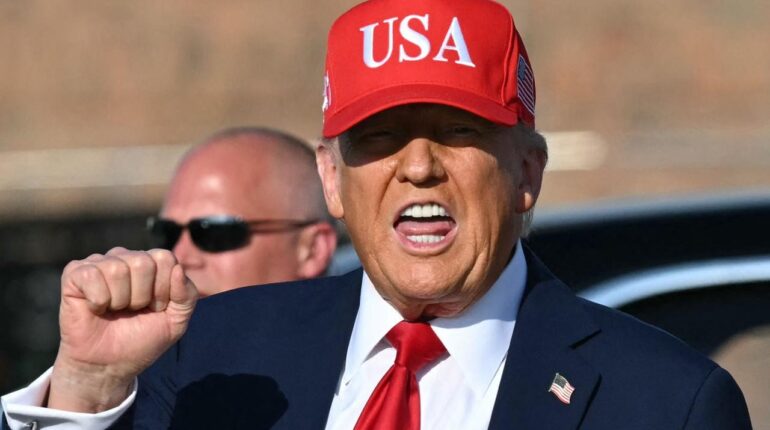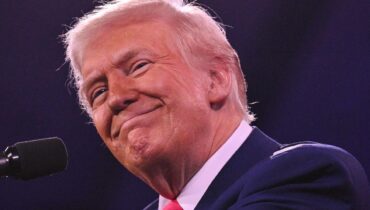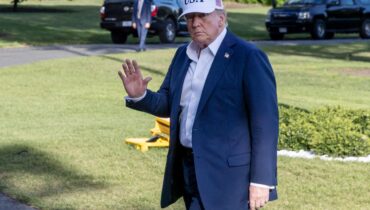📌 Trump’s radical new rule: Foreign tourists now pay this much more to enter US National Parks

Posted 9 July 2025 by: Admin
Trump’s “America First” Policy Hits Foreign National Park Visitors
The sweeping changes to America’s national parks system have taken a decisive turn toward protectionism. In a calculated move that targets international tourism, Donald Trump has signed an executive order that will force foreign visitors to pay significantly higher fees while keeping costs low for American citizens.
“The national parks will be about America first,” Trump declared at a rally in Iowa, unveiling the policy that fundamentally reshapes access to the country’s most treasured natural landmarks. The executive order doesn’t stop at fee increases—it mandates that Americans receive priority access in reservation systems, effectively creating a two-tier system for park entry.
Foreign tourists planning visits to iconic destinations like Grand Canyon, Yosemite, and Yellowstone will face the immediate financial impact. Current fees range from $15 per person to $35 per vehicle at popular parks, though the administration hasn’t yet revealed the exact increases or implementation timeline.
The White House frames the policy as a strategic revenue generator, directing the additional funds from foreign visitors toward infrastructure improvements and conservation projects. This positioning attempts to justify the discriminatory pricing structure as an investment in America’s natural heritage.
However, the timing raises critical questions about the administration’s broader strategy. While foreign tourists will shoulder higher costs to support park maintenance, the underlying financial foundation of the National Park Service faces an unprecedented threat that could fundamentally alter how these spaces operate.
Massive Budget Cuts Threaten National Parks System
This financial threat isn’t theoretical—it’s already devastating park operations across the country. Trump’s 2026 budget proposes slashing $1.5 billion from the National Park Service, representing nearly 40 percent of the agency’s current funding. National Park Conservation Association president Theresa Pierno calls these cuts “catastrophic.”
The numbers paint a stark picture of systematic dismantling. More than 1,000 park workers were laid off in February alone, with an additional 700 accepting buyouts. Since Trump took office, the NPS has lost 24 percent of its permanent staff—nearly a quarter of its entire workforce vanished in months.
The administration promised to fill 8,000 seasonal positions critical for summer operations. They’ve filled only half. Without these essential workers, visitor centers close, trails go unmaintained, rescue response times slow, and cultural sites deteriorate. This as millions of visitors pour into parks during peak season.
The White House defends the cuts as necessary “streamlining,” claiming they will “transfer certain properties to state-level management to ensure long-term health.” Yet this rationale rings hollow when juxtaposed with the fee increases targeting foreign visitors.
The contradiction is glaring: foreign tourists will pay premium prices for access to parks that are simultaneously being gutted of the staff and resources needed to maintain them. The 433 sites spanning 85 million acres of federal land face an uncertain future as the administration attempts to balance budget reduction with revenue generation.
This policy paradox extends beyond government operations, rippling through communities that depend on thriving national parks for their economic survival.
Celebrity And Corporate Pushback Against New Policies
This policy paradox has sparked an unprecedented wave of resistance from unexpected quarters. Best-selling author Colleen Hoover, whose books outsold the Bible in 2022, directly challenged Trump’s fee hikes through her massive platform.
The Texas author told her 1.9 million Instagram followers she would personally cover the price difference for foreign tourists planning park visits. “These policies do not reflect the hearts of all the kind people in this country,” Hoover declared, turning her literary influence into political activism.
Her gesture represents more than celebrity virtue signaling—it’s become a rallying cry for Americans embarrassed by their government’s treatment of international visitors. The romance novelist’s offer transforms individual shame into collective action, mobilizing millions to defend American hospitality.
Corporate America is also pushing back. Australian-born travel company Intrepid Travel donated $50,000 to the National Park Conservation Association, directly funding the fight against budget cuts. The company’s managing director Leigh Barnes relocated to Seattle specifically to combat what he calls threats to “incredibly important” national treasures.
Intrepid launched “Active-ism” trips featuring influential activists and local guides, deliberately priced $500-$800 below standard itineraries. These aren’t profit-driven ventures—they’re accessible acts of resistance designed to flood parks with conscious travelers.
The company operates 26 trips across 18 national parks, employing 200 local guides and 60 staff while hosting over 20,000 travelers annually. Their business model depends on healthy, vibrant parks—making this corporate activism a matter of survival.
This grassroots and corporate coalition faces a deeper challenge: sustaining America’s tourism economy while the administration systematically undermines its foundation.
Economic Impact On Tourism And Local Communities
That foundation rests on numbers that reveal the true scale of what’s at stake. The National Park System spans 433 sites across 85 million acres of federal land, with parks in every state—an economic engine that extends far beyond entrance gates.
Current fees at popular destinations like Grand Canyon, Yosemite, and Yellowstone charge $35 per person or $35 per vehicle. These seemingly modest amounts generate millions in revenue, but the administration hasn’t disclosed when increases will take effect or by how much they’ll rise.
The uncertainty alone damages planning for international tour operators. Intrepid Travel’s 200 local guides and 60 staff represent just one company’s investment in park-dependent jobs. Barnes emphasizes that parks function as “amazing economic drivers” for surrounding communities, creating employment networks that extend far beyond federal payrolls.
Local businesses—hotels, restaurants, equipment rental shops, souvenir stores—depend on the steady flow of international visitors that higher fees could choke off. The ripple effects multiply through entire regional economies built around park access.
The administration’s mixed signals create a devastating paradox: raising foreign visitor fees while simultaneously cutting the very infrastructure and services that make parks attractive destinations. Higher prices paired with reduced staffing and closed facilities threatens to price out international tourists while delivering diminished experiences.
This economic contradiction exposes the policy’s fundamental flaw—treating national parks as revenue generators rather than the complex ecosystems they actually represent, where conservation, tourism, and local prosperity interconnect.




















